King Tut is a 100-year-obsession, especially at one Jersey restaurant
- Oops!Something went wrong.Please try again later.
- Oops!Something went wrong.Please try again later.
- Oops!Something went wrong.Please try again later.
Crazes come, crazes go. Fidget Spinners, shoulder pads, Vanilla Ice are with us one season, gone the next.
But one craze, about to celebrate its 100th anniversary, has never died. King Tut, whose tomb was discovered by archaeologist Howard Carter on Nov. 4, 1922 — a century ago Friday — was a sensation then. And he's a sensation now.
"It's the greatest discovery," said Khalid Nasr, owner of King Tut restaurant in Somerville — a Cairo native who literally has King Tut in his blood.
"To find all those kilos of gold in one place," he said. "And the color, that stayed in some rooms for 3,000 years. The blue is still blue. How would they do this?"
Arrayed around his colorful eatery are golden statues of gods and goddesses, canopic jars, busts of pharaohs. On the menu are such Middle Eastern delicacies as King Tut Lamb Shank, and Chicken Horos Style. In the corner is a full-size mummy case — a reproduction of Tut's.
"People ask what's inside," he said. "I tell them, 'This is where we keep the customers who don't pay the bill.' "
King Tut Restaurant, which opened in 2018, is a surviving twin — a sister King Tut establishment, which Nasr opened in Lebanon N.J. in 2013, closed this year.
Both grew out of a desire to celebrate his native Egypt, where he came from in 1987, and where Tutankhamun — never "King Tut" — is still a national hero.
"King Tut has always been bigger even than the kings that built the pyramids," he said. "The baby that everybody loved, who died so young — that just breaks everybody's heart. "
A golden hoard
The actual 1922 opening of King Tutankhamun's tomb, which didn't begin until Nov. 26 1922, was the realization of every boys' adventure story. "Can you see anything?" Carter was asked, when he had made a small hole in a doorway, and thrust a candle into the pitch-black tomb.
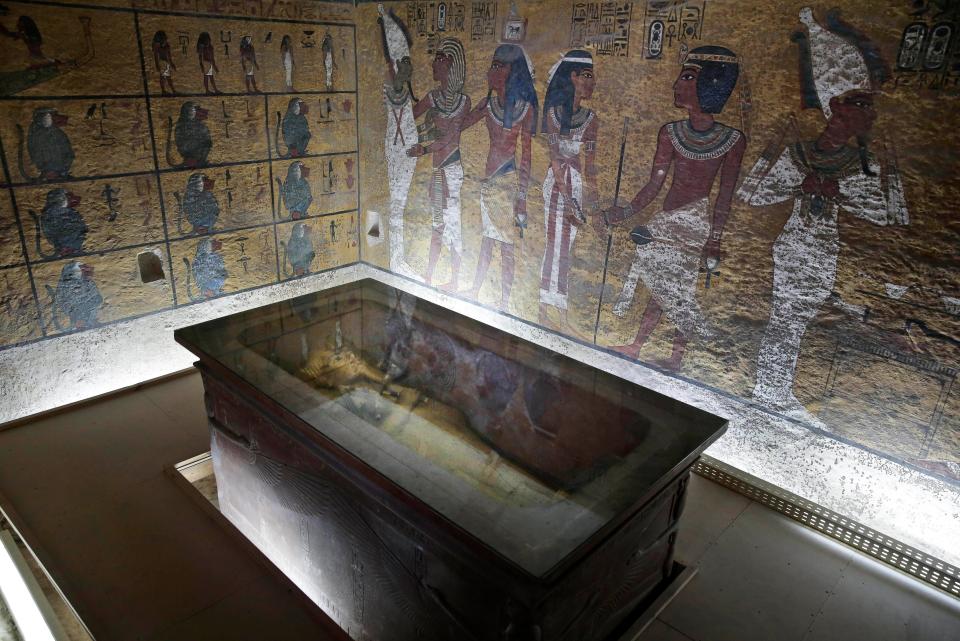
"Yes," Carter replied. "Wonderful things."
What Carter found, when he finally stepped into the tomb, was a treasure out of the Arabian Nights.
Amulets, bracelets, necklaces, ear studs, chairs, paintings, board games, a chariot, jars of wine and oil, thrones, couches, ritual beds, weapons: some 4,000 items in all. Soon, there were even more thrilling discoveries, when the team started to explore the actual burial chamber on Feb. 16, 1923. There was the golden mask of Tutankhamun, the most famous of all Egyptian artifacts. And there was King Tut himself — the only completely undisturbed royal mummy ever recovered.
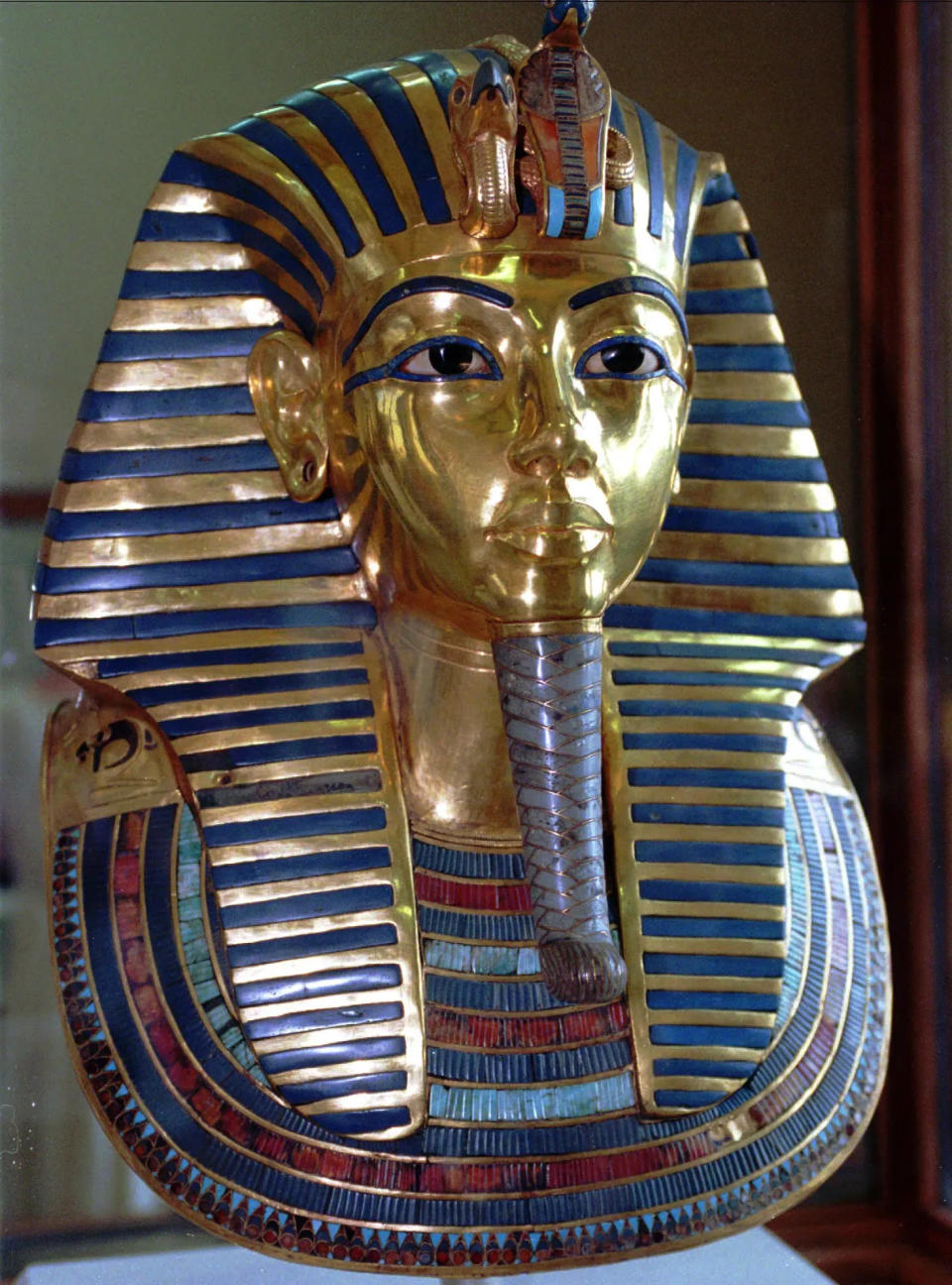
It was — and is — the most celebrated find in archaeological history. And it wasn't just scientists who were thrilled.
America went Tut-crazy in the 1920s. There were Tut clothes, jewelry, hairstyles, furniture. There were Tut books, games, gloves, pendants, posters. Herbert Hoover named his dog Tut. "Egyptian" movie theaters — led by Grauman's Egyptian in 1922 — sprang up across America. Cecil B. DeMille was just barely talked out of making King Tut the pharaoh who banished Moses in his 1923 silent version of "The Ten Commandments."
"Historians rudely pointed out that Tutankhamun had nothing to do with it," wrote DeMille biographer Charles Higham.
Tin pan alley songwriters had a field day. "In old King Tut-Tut-Tut-ankhamun's day — Beneath the tropic skies King Tut-Tut-Tut was very wise," ran one ditty. Another went: "Old King Tut was a wise old nut to sleep three thousand years — He never had the chills or croup or gargle Kosher noodle soup."
Young king Tut
The notion of "Old King Tut" — a middle aged lecher surrounded by dancing girls − has more to do with pop culture than Egyptian history.
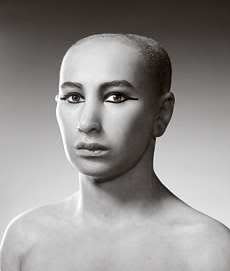
Tutankhamun, as we all know, was young — he died around age 18 or 19. He was also a minor royal (circa 1341 to 1323 B.C.) who became a major figure to us through an historical accident — his tomb (comparatively modest) had been hidden by debris for thousands of years, and thus had never been found and plundered like every other pharaoh's.
But pop culture is also the reason King Tut continues to resonate to this day.
The Curse of Tut's Tomb, which supposedly led to the death of Carter's patron Lord Carnarvon, in 1923 — likely from blood poisoning — sparked newspaper and magazine articles, and ultimately every "Mummy" movie you've ever seen. Carter himself was probably an inspiration for Indiana Jones.
In the 1966 "Batman" TV series, "King Tut" (played by Victor Buono) was one of the recurring villains. And Steve Martin's 1978 "King Tut" song, inspired by the then-touring "Treasures of Tutankhamun" exhibit, sold over a million copies and ended up No. 17 on the Billboard Top 100. "Born in Arizona, moved to Babylonia," Martin sang.
Who are you going to believe — your history teacher or The Jerk?
100 years and counting
"Tutmania," as the King Tut craze of the '20s was dubbed, still bubbles to the surface every now and then.
King Tut's "suspicious" death was a hot topic for awhile — until forensic scientists determined, in 2006, that complications from a broken leg, rather than murder, was the likely culprit. Excitement about further, as yet undiscovered, burial chambers was quashed by radar scans in 2018 — and then reignited, in 2020 and 2022, by new scans.
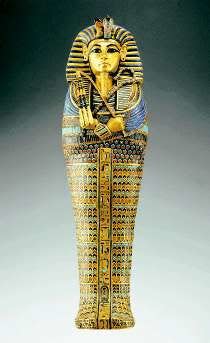
Every few years, a new traveling "Tut" exhibit, displaying some small portion of the artifacts (their permanent home is the Egyptian Museum in Cairo) attracts new customers. When the real artifacts aren't obtainable, people will pay to see reproductions.
And when reproductions aren't available, they'll buy tickets to "Beyond King Tut: The Immersive Experience," a multimedia spectacle created in partnership with National Geographic Society, at Pier 36 in New York through Jan. 1. Nine huge projection galleries, in the manner of the popular "immersive Van Gogh" shows, will give viewers the sense that they really are walking through history.
"Buried treasure has always had a fascination, and this is the ultimate one," said author and Tut enthusiast Tom Mueller, whose piece "Tut's Treasures" is the November cover story of National Geographic.
"I think a big part of it is the absolute mind-blowing wealth and sophistication of every object, from the sandals to the unguent bowls," Mueller said. "Everything is high art."
Who says You Can't Take it With You? Not the Egyptian divines who buried the boy pharaoh with enough loot to sink Cleopatra's barge. "There's a lot of gold, a lot of bling," Mueller said.
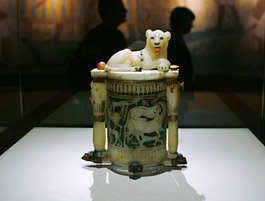
Wealth fascinates us. So does death. Tutankhamun enthralls on both counts. "When you go down to the tomb, or even look at the death mask, there is a sort of feeling of, this is the path I will walk one day," Mueller said. "It's something that still speaks to us."
Slow buildup
In 1922, the Tut discoveries were the start of a 100-year-obsession. But they also marked the climax of a "Egyptian" mania that had been building for 100 years previously.
"Naturally, it's not just King Tut, it's the whole history of Egypt that's amazing," Nasr said. "The tombs, the pyramids. What's inside the pyramids."
Just a century before Carter's discovery, in 1822, the Rosetta Stone had been decoded. Hieroglyphics, long dismissed as magic symbols, could suddenly be translated. A whole new window into ancient history had opened.
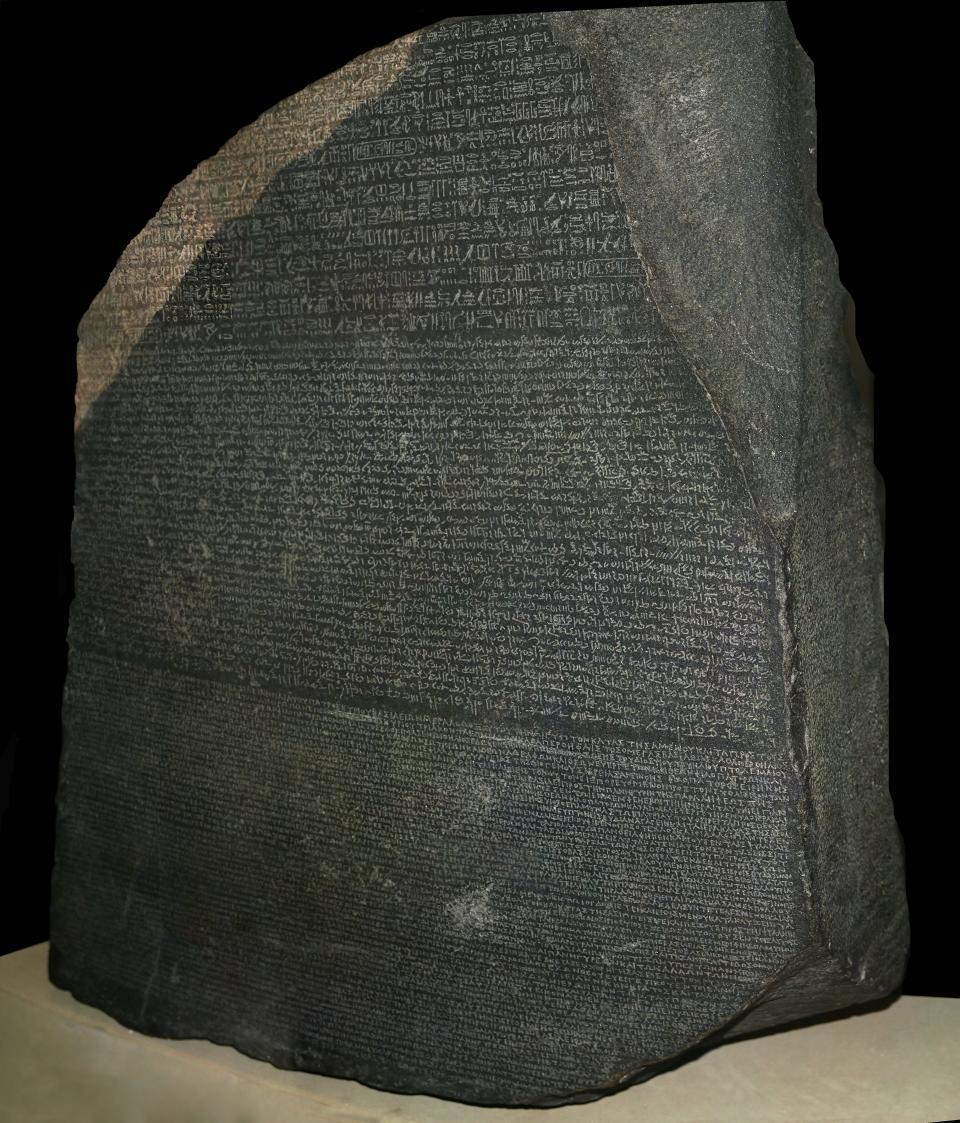
French, English and American archaeologists, in expeditions bankrolled by millionaires, vied to uncover artifacts. Egyptian art became the rage with the well-to-do. Tourists would pay to have local kids plunder art from tombs. There was a large traffic in mummies. The mummy of Ramesses I, founder of ancient Egypt's 19th dynasty, ended up in a museum at Niagara Falls.
"That stuff still goes on," Mueller said. "Wealthy organizations, wealthy individuals, are still digging things up illicitly out of Egypt."
It was in this atmosphere that Carter began digging, in 1914, in Luxor's Valley of the Kings.
Most tombs in the famous burial site had long since been plundered. Carter dreamed of finding an intact one, unexplored and un-robbed. Tutankhamun, son-in-law of Queen Nefertiti — whose bust, discovered in 1912, had caused a sensation — seemed a good prospect. His tomb had never been found.
For eight years, interrupted by World War, Carter dug. No luck. In 1922, his patron Lord Carnarvon was about to pull the plug, when a member of the work team stumbled on a stone. It was the top of a flight of steps — leading down to a tomb.
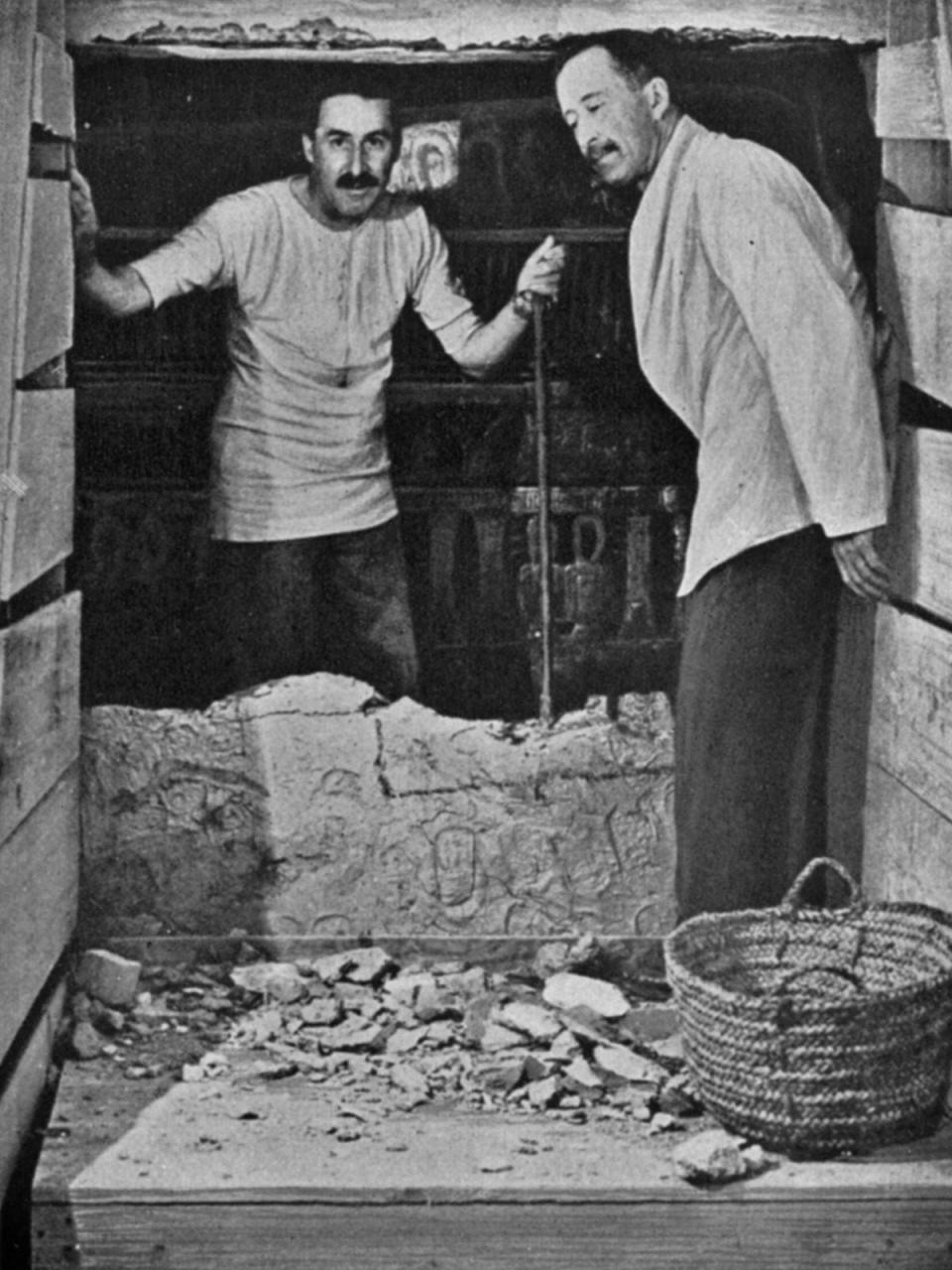
That was November 4. Times being what they were, the expedition had to wait three weeks, for the arrival of Lord Carnarvon, in order to actually go in and have a look. What they saw blew their minds.
"It was like this incredibly rich pirate horde, a robber's cave," Mueller said.
Finders losers
The Tut discovery capped a century of colonial-driven archaeological work. But it was also, Mueller notes, the beginning of the end.
Egyptians, under the heel of Europe for more than a century, had grown resentful. The 1919 Egyptian revolt against Britain expressed a new spirit of nationalism. The 1922 discovery of Tut clinched it.
"The beauty and majesty of his grave goods sent a strong message to the Egyptians," Mueller said. "Once, we were our own masters. We are able to run our own country. It came along at just the right moment to give impetus to the independence movement."
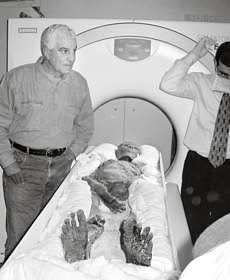
After much legal wrangling — and a payoff by the Egyptian government to Lord Carnarvon — it was determined that the Tut treasures would remain in Egypt. So they remain to this day.
But other loot, from other pharaohs, is still at large. And Nasr, for one, thinks it's high time Egypt's property was returned to the Egyptians.
Not that his restaurant, full of Isises, Osirises, and ancient Egyptian charioteers (his wife buys the reproductions in Egypt, he said) needs any more.
"It is our right to get this stuff back," Nasr said. "As you know, England stole a lot of our history. If you go to the British Museum — what is this stuff doing there? Nobody knows the value of these things. We need to get our history back."
∎ King Tut Restaurant, 6 Main Street, Somerville. 908 722-1360. kingtutgrillandseafood.com.
∎ King Tut: The Immersive Experience. 299 South Street, New York, through Jan. 1. nationalgeographic.org/tickets/events/event/beyond-king-tut-the-immersive-experience.
This article originally appeared on NorthJersey.com: King Tut 100 years later: Obsession, especially at this NJ restaurant

